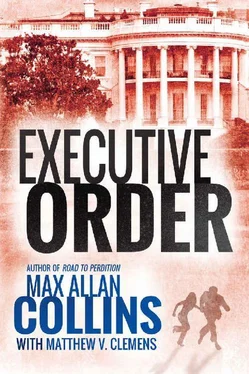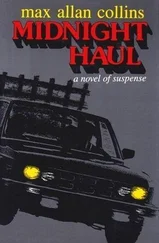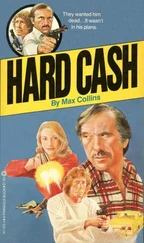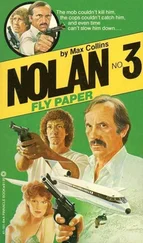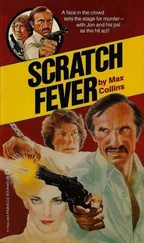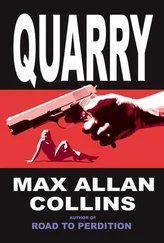“Sure,” Reeder said. “Good detective, even if he does look about twelve years old.”
“Well, Woods drew the Chamberlain hit-and-run, and when I casually asked him what evidence he had, he not so casually told me the feds took everything... and made it clear the matter, which is to say the murder, wasn’t his problem.”
“How did Pete take that?”
“More gracefully than either of us would. He told them nicely that he should get at least a look-see, and the feds told him just as nicely to screw off — that in the case of a federal death, he had no jurisdiction.”
“Which agency got the evidence?”
“Even that’s more than they were willing to tell Woods. What they did tell him was to butt out.”
“And has he?”
“Yup. And normally Woodsie Owl doesn’t back down from anything. Working that case with you last year must have spooked him some. Now he knows just how deep the doo-doo can get.”
“Bish, he’s a smart kid, and did the right thing. Now do me a favor.”
“Any time.”
“Hang up and forget we had this talk.”
“Fine. As long as I’m allowed to remember one thing.”
“Which is?”
“Which is, you owe me big time.”
They clicked off.
The White House’s massive black gates allowed Reeder passage and he headed north, toward Lafayette Square. Soon he turned west, toward home. He drove leisurely, replaying in his mind the conversation with the President and his Chief of Staff; but even before he got to the roundabout at New Hampshire Avenue, he knew he had a tail. It stayed two cars back but in the same lane — that way if Reeder took a quick right, the tail could follow.
It was a simple Ford Explorer, dark green, a few years old — not some black tinted-glass Interceptor utility, and certainly not a hovering helicopter — much too showy, far too obvious. No, this might be a government car, or an ex-police car. Either one meant reinforced bumpers and more horsepower than his Prius, meaning at least a modest advantage for his new best friend.
Getting Rogers on the burner cell would be the fastest way to find out if the Explorer was a chaperone she’d provided. But also the fastest way for the tail to capture the signal of his burner, and hers.
These people would obviously know where Reeder lived, so trying to lose the tail was pointless, unless he was prepared to go underground immediately. Right now the tail was keeping its distance, though the headlights of other vehicles revealed a driver’s silhouette and no passengers.
Reeder took a direct route home. When he pulled up in front of his white-brick, two-story townhouse on Thirty-Fourth Street Northwest, the tail tucked into a spot two houses back, on the other side of the street. Reeder got out, closed his door, and — on the way to the front steps — walked around behind his vehicle, lending him an inconspicuous view of the Explorer. But a streetlight was nearby and shining down on the car reflectively, giving Reeder no look at all of the driver.
Instead of going across the street to confront the tail, Reeder trotted casually up to his red front door, unlocked it, and slipped in. After quickly dealing with the alarm system on the wall just inside, punching in the seven-digit code, he got his SIG Sauer out of the drawer of the little table beneath the security keypad.
He considered going out the back way, cutting through yards, then coming up behind the Explorer to meet his new friend.
But checking the house, even though the alarm had been on, was the priority. He turned on the living room light, moved into the dining room. Everything seemed quiet, appeared undisturbed. Of course if a team had bugged the place, they would have been pros and, like the Boy Scouts in a forest, would’ve left it as they’d found it. SIG Sauer in hand, barrel up, he edged into the kitchen, elbowing a light on.
At the back door, he considered the strong possibility that the rear of the house was covered, too. If he was the one doing surveillance, he’d sure as hell want someone back there.
After checking the two bedrooms and his home office upstairs, and finding no guests, Reeder returned to the front door. He tossed his suit coat on a chair, then went to the front closet and got his black ABC Security hooded sweatshirt, which he got into. He dropped the expandable baton in his right sweatshirt pocket, and tucked the nine millimeter into the back waistband of his slacks. He pulled the sweatshirt down so that it covered the pistol grip.
He went out the front door, in no hurry, just a guy going out for an evening stroll or maybe to a neighborhood 24-hour joint. This seemed better than heading out the back door into the waiting arms of who-the-hell-knew.
He crossed the street at his townhouse and took the sidewalk in the direction of the parked Explorer. Hands in the sweatshirt pockets, the baton in his right, he figured his brazen approach might spook the tail into taking off, or anyway action of some sort... but nothing.
Reeder closed the distance at his evening-stroll pace. As he neared, he couldn’t see past the streetlight reflection on the windshield to get a look at the driver. Since that driver might have a gun aimed at him right now, this was... disconcerting.
But killing Chamberlain by hit-and-run was one thing, and shooting a well-known, government-connected figure like Joe Reeder was something else again. He liked his odds. When he got to the vehicle and could see through the side window, the car was empty.
Damn!
His eyes swiftly scanned the street for any sign of another person — nothing. Where the hell had the guy gone? Nearest place for coffee was several blocks down — should he check that? He scanned the area again, more slowly now — it was as if the world had ended, only an occasional distant honk of a car horn to suggest otherwise.
He walked to the next corner, crossing to his own side of the street, and came cautiously back — where could the tail have gone?
Across the street from the start of his block, Reeder ducked into the shadows of the house there. It wasn’t like you tailed somebody just to park a car, unless...
... a car bomb?
There were car bombs now that could obliterate blocks, and these people were deadly enough for that. But usually they were more surgical — Wooten had taken Yellich out by poison, Wooten himself got liquidated by a sniper’s precise bullet, Chamberlain by hit-and-run. Neat kills, relatively speaking, at least as much as murder is ever “neat.”
So, no — no car bomb.
Had the driver left his vehicle to check in with somebody watching the rear of Reeder’s house?
A possibility. That meant the driver would soon be returning to the Explorer, either to plant himself for surveillance or to vacate the scene. Little attempt, though, had been made to conceal from Reeder that he had been tailed, and would now be subject to surveillance...
Somehow, he needed to get his hands on the driver of that Explorer, and interrogate him. Shake it out of him, or goddamn waterboard him in the townhouse bathtub if that was what it took...
Keeping to the shadows, Reeder crossed to the northwest corner of Thirty-Fourth Street NW and P Street, then turned west on P toward the alley that ran behind the townhouses. Occasionally, as he crept along, he stopped to listen, but heard nothing. Not even a shoe scraping over concrete, not the rustle of clothing nor the rhythm of heavy breathing.
As he turned into the alley, a fist flew from the darkness.
Reeder couldn’t react quite fast enough and it connected high on his cheek, not on his jaw, as he ducked. Even so, the blow turned the inside of his skull into Fourth of July fireworks, and his balance was gone.
The attacker followed up on that advantage, kicking the unsteady Reeder in the ribs, martial arts — style, sending him to the gravel of the alley. His work apparently done, his escape seemingly assured, the attacker headed back toward the sidewalk.
Читать дальше
